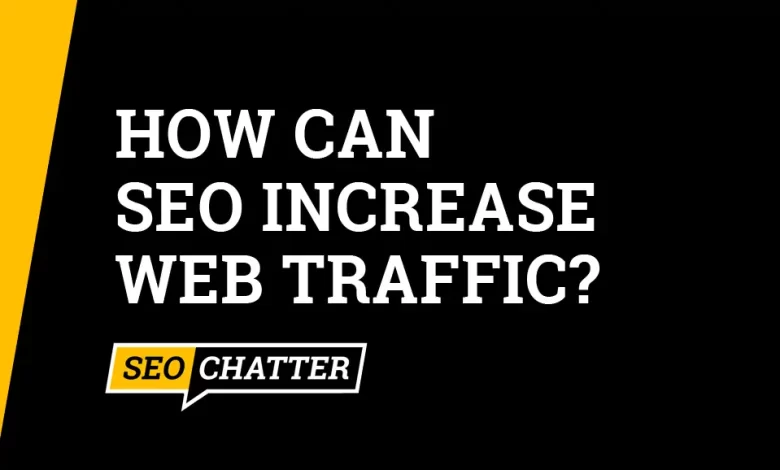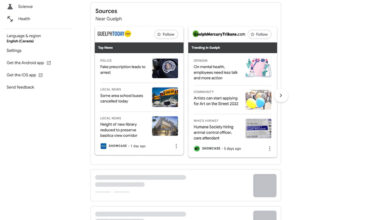How Can SEO Increase Web Traffic? (Answered With 10 Ways)-SEO

SEO, or search engine optimization, is the process of improving a website’s visibility and relevance for search engines and users. SEO can help websites rank higher on search engines like Google, Yahoo, and Bing for relevant keywords, drive more organic traffic, and increase conversions and revenue.
But how can SEO increase web traffic?
What are the best practices and techniques to optimize your website for search engines and users?
In this article, we will cover some of the most effective ways to increase web traffic with SEO.
How Can SEO Increase Web Traffic?
SEO can increase web traffic by optimizing your website for relevant keywords, content, speed, backlinks, site structure, mobile devices, voice search, and featured snippets. SEO can help your website rank higher in the search engine results pages (SERPs) and attract more organic visitors and conversions.
Ways to Use SEO to Increase Web Traffic
1. Perform Keyword Research
Keywords are the words and phrases that users type into search engines to find what they are looking for. Keywords are also the words and phrases that you want your website to rank for in the search engine results pages (SERPs).
Performing keyword research is the first step to increase web traffic with SEO. Keyword research helps you identify the keywords that your target audience uses to find your products or services, as well as the keywords that your competitors are ranking for.
We have a complete guide on How to Do Keyword Research with the best practices for SEO if you want to dive deeper into this topic. However, the basic process is to use tools like Semrush or Ahrefs to conduct keyword research and find relevant, high-volume, and low-competition keywords for your website. You can also use tools like Google Trends or AnswerThePublic to find trending topics and questions related to your niche.
2. Optimize Your Website Content
Once you have a list of keywords that you want to target, you need to optimize your website content for those keywords. Optimizing your website content means creating high-quality, relevant, and engaging content that matches the search intent and expectations of your users while also using your keywords in the best place for on-page SEO.
You can optimize your website content by:
- Using your target keywords in your page titles, headings, subheadings, meta descriptions, URLs, and image alt texts.
- Writing clear, concise, and informative content that provides value and answers the users’ queries.
- Using different types of content formats, such as text, images, videos, infographics, etc., to appeal to different audiences and preferences.
- Adding internal links to other relevant pages on your website to keep users engaged and reduce bounce rate.
- Adding external links to authoritative and trustworthy sources to support your claims and boost your credibility.
(See this related guide with the top On-Page SEO Factors for a complete list of areas to optimize.)
3. Improve Your Website Speed
Website speed is another important factor that affects web traffic. Website speed refers to how fast your website loads and displays on different devices and browsers.
As explained in our other guide about Can SEO Be Affected By Website Speed, the answer is yes, speed does impact both user experience and SEO performance.
Users expect websites to load fast and smoothly. If your website takes too long to load, users may lose interest and leave your site. This increases your bounce rate and reduces your dwell time, which are signals that search engines use to measure user satisfaction.
Search engines also prefer websites that load fast and provide a good user experience. Google has announced that page speed is a ranking factor for both desktop and mobile searches. Google also uses Core Web Vitals as a set of metrics to measure the loading speed, interactivity, and visual stability of web pages.
You can improve your website speed by:
- Using a reliable web hosting service that offers fast servers and bandwidth.
- Compressing and resizing your images and videos to reduce their file size.
- Minifying and combining your CSS, JavaScript, and HTML files to reduce the number of requests.
- Enabling caching to store frequently used files on the browser.
- Using a content delivery network (CDN) to distribute your content across multiple servers around the world.
You can use tools like Google PageSpeed Insights or Lighthouse to measure and improve your website speed and Core Web Vitals.
4. Build Backlinks
Backlinks are links from other websites that point to your website. Backlinks are important for web traffic because they signal to search engines that your website is trustworthy and authoritative in your niche. They also drive referral traffic and exposure to your website.
Building backlinks is one of the most challenging but rewarding aspects of SEO. Building backlinks requires creating valuable content that other websites want to link to, as well as reaching out to relevant websites and influencers in your niche.
You can build backlinks by:

- Creating original research, case studies, surveys, infographics, etc., that showcase your expertise and provide useful insights.
- Writing guest posts on reputable websites in your niche that offer a link back to your website.
- Participating in online forums, communities, social media platforms, etc., where you can share your content and link back to your website.
- Asking for testimonials or reviews from your customers or partners that include a link back to your website.
- Finding broken links on other websites and offering them a replacement link from your website.
You can use tools like Ahrefs’ Site Explorer or Semrush’s Backlink Analytics to monitor and analyze your backlink profile and find new link opportunities.
5. Optimize Your Site Structure
Your site structure is the way you organize and link your web pages. Your site structure is important for web traffic because it affects how users and search engines navigate and understand your website.
A good site structure should:
- Be logical, simple, and intuitive.
- Have a clear hierarchy and categories.
- Have a consistent and descriptive navigation menu.
- Have a functional and user-friendly search function.
- Have a comprehensive and updated sitemap.
Optimizing your site structure can help you:
- Improve user experience and retention.
- Increase crawlability and indexability.
- Enhance relevance and authority.
- Boost internal linking and topical clusters.
- Reduce duplicate content and cannibalization.
You can use tools like Screaming Frog or Jetoctopus to audit and improve your site structure.
6. Optimize for Mobile Devices
Mobile devices are the primary source of web traffic in most countries. According to Statista, mobile devices accounted for 54.8% of global web traffic in the first quarter of 2021. Mobile devices are also the preferred device for online shopping, social media, entertainment, and more.
Optimizing for mobile devices is essential for web traffic because it affects how users and search engines perceive and interact with your website.
A mobile-friendly website should:
- Be responsive, meaning it adapts to different screen sizes and orientations.
- Be fast, meaning it loads quickly and smoothly on mobile devices.
- Be usable, meaning it has easy-to-read text, clear buttons, and intuitive gestures.
- Be accessible, meaning it follows the web accessibility guidelines and standards.
Optimizing for mobile devices can help you:
- Improve user satisfaction and loyalty.
- Increase conversions and revenue.
- Enhance SEO performance and ranking.
- Comply with Google’s mobile-first indexing.
You can use tools like Google’s Mobile-Friendly Test or Mobile Usability report to check and improve your mobile-friendliness.
7. Optimize for Voice Search
Voice search is the act of using voice commands to search for information on the internet. Voice search is becoming more popular and prevalent, especially among younger generations, due to the convenience, speed, and accuracy of voice assistants like Siri, Alexa, Google Assistant, etc.
Optimizing for voice search is important for web traffic because it affects how users find and consume your content.
A voice-friendly website should:
- Use natural language and conversational tone.
- Answer common questions and queries related to your niche.
- Use long-tail keywords and phrases that match the users’ intent.
- Use schema markup and structured data to provide rich snippets and featured snippets.
- Optimize for local searches and include location-based keywords.
Optimizing for voice search can help you:
- Reach new audiences and markets.
- Increase brand awareness and trust.
- Enhance user engagement and retention.
- Gain a competitive edge in the future of search.
You can use tools like AnswerThePublic or Semrush’s Keyword Magic Tool to find voice search keywords and optimize your content accordingly.
8. Optimize for Featured Snippets
Featured snippets are the boxes that appear at the top of the SERPs that provide a quick answer or summary to a user’s query. Featured snippets are also known as “position zero” because they rank above the organic results.
Optimizing for featured snippets is beneficial for web traffic because they attract more attention, clicks, and trust from users. They also increase your chances of appearing in voice search results, as voice assistants often use featured snippets as their source of information.
A featured snippet-friendly website should:
- Use clear and concise language that answers the users’ questions.
- Use headings, subheadings, lists, tables, etc., to structure your content.
- Use schema markup and structured data to provide additional information.
- Use relevant images, videos, charts, etc., to enhance your content.
- Monitor your competitors’ featured snippets and try to outrank them.
Optimizing for featured snippets can help you:
- Boost your visibility and authority in the SERPs.
- Drive more organic traffic and conversions to your website.
- Provide a better user experience and satisfaction.
- Capture more voice search traffic.
You can use tools like Ahrefs’ Site Explorer or Semrush’s Position Tracking to find featured snippet opportunities and optimize your content accordingly.
9. Create Engaging Content
Content is the core of SEO. Content is what users are looking for when they use search engines. Content is what search engines use to understand and rank your website. Content is what drives web traffic.
Creating engaging content is crucial for web traffic because it affects how users perceive and interact with your website.
Engaging content should:
- Be original, unique, and valuable.
- Be relevant, timely, and updated.
- Be informative, entertaining, or educational.
- Be consistent with your brand voice and tone.
- Be optimized for SEO and user experience.
Creating engaging content can help you:
- Attract and retain your target audience.
- Increase your social media shares and backlinks.
- Enhance your reputation and credibility.
- Generate more leads and sales.
- Foster loyalty and advocacy.
You can use tools like BuzzSumo or Google Analytics to research and analyze your content performance and find new ideas.
10. Analyze and Measure Your Results
The final way to increase web traffic with SEO is to analyze and measure your results. As mentioned in our guide about Can SEO Be Measured and Tracked, analyzing and measuring your results is important for web traffic because it helps you evaluate your SEO strategy and make data-driven decisions to improve it.
You can analyze and measure your results by:

- Setting up goals and KPIs that align with your business objectives.
- Using tools like Google Analytics or Semrush to track and report your web traffic metrics, such as organic traffic, keyword rankings, search visibility, traffic value, organic traffic conversions, etc.
- Using tools like Google Search Console or Ahrefs to monitor and troubleshoot your technical SEO issues, such as indexed pages, index coverage errors, core web vitals, website health, etc.
- Using tools like Google Data Studio or DashThis to create and visualize your SEO dashboard and reports.
- Using tools like Hotjar or Crazy Egg to understand and optimize your user behavior and feedback.
Analyzing and measuring your results can help you:
- Identify your strengths and weaknesses.
- Discover new opportunities and threats.
- Test and optimize your SEO tactics.
- Prove your ROI and value.
- Adjust and refine your SEO strategy.
Summary for How SEO Can Increase Web Traffic
SEO can increase web traffic by making sure your website is optimized for relevant searches. SEO can ensure your website ranks for target keywords, provides quality content, loads fast, earns backlinks, has a good site structure, is mobile-friendly, voice-friendly, featured snippet-friendly, engaging, and measurable. By following these top ways to increase web traffic with SEO, you can boost your web traffic and grow your online presence.

The Editorial Staff at SEO Chatter is a team of search engine optimization and digital marketing experts led by Stephen Hockman with more than 15 years of experience in search engine marketing. We publish guides on the fundamentals of SEO for beginner marketers.
#SEO #Increase #Web #Traffic #Answered #Ways





